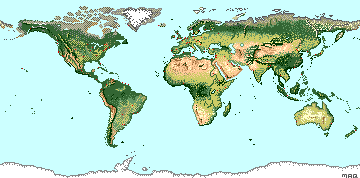IOV: Information Structure
- Narratives of Space and Time
- Discussion
- p. 110 The adventures of the Japanese beetle
- the subtle and sophisticated notion of ‘reworked space’
- is the esophageal timetable understood?
- IOV and the Meaning of Life (on Earth)
- Announcements
- nil
- Questions?
- The Structure of Today’s Lecture
Class Activity: Final Project Design I
Class Activity: Final Project – Editing
Information Structure I
Information Structure II
- Class Activity: Final Project Design I
- Final Project Design
- An invitation to several students to say What their Final Project is About
- and optionally, discuss pros, cons, progress, concerns, problems.
- Small Groups: Peer Discussion and Consultation
- Free form, optional, with or without tabling the proposal hardcopy
- Information Organization and Visualization
- Information Structure I
- * Background Brainstorm using the Blackboard or Inspiration *
- What are important characteristics of good information structure ?
- * Background Brainstorm using the Blackboard or Inspiration *
- the question rephrased: What are desireable structural properties of bodies of information?
- or: In terms of its structure, what should a body of information have, or be like?
- note: also applies to data, database, knowledge base, etc.
- A list of requisite aspects:
- rich (quantity and quality–meaningful)
- diverse
- micro/macro
- organized
- Additional relevant aspects:
information atoms–molecules–objects...
- hierarchical
- linkages/connections
- small multiples
- Quescussion No. 1: Symbolic Elements Used in Representing Structure
- Lead Question: How can we REPRESENT structure?
- text, character strings
- Graphic Elements Used in Representing Structure
- points
- lines
- areas
- volumes
- links
- polygons can be used to represent area boundaries
e.g. info ‘boxes’
this means that lines are used to represent areas (transposed, or"switched", representation)
- surface
- bodies (3D shape and size)
- layers
- note that on flatland, by definition
- there is no direct (analogic) volumetric representation
- and all the representations of volume/surface are surrogate, i.e.: represented using lines or areas
(e.g. wireframe (fishnet), TIN, etc.)
- Information Structure II
- General models of information structure:
- text
- narrative
- list
- outline (a hierarchical list)
- annotation
- Tables
- tables can be viewed as lying on a continuum between text and graphics
- examples: bus schedule, periodic table of chemical elements, relational database, musical score, dance score, animation/movie/video/multimedia "score boards"
- hierarchical tree graphs
- network graphs (tangled trees...)
- other: box diagrams?
- Notes re graphic representations:
- graphic representations are really mixed graphic and text representations;
- they invariably use some amount of text for labeling or annotation
- graphic representations are often hybrids that consist of a combination of graphic elements
- eg. a network made up of links and nodes (point or area symbols representing a nodal point)
- eg. 3D web representation of hypertext
- dominant and secondary graphic elements (axis of scatterplot is secondary)
- Other graphics include 3-D Graphics
- Physical Models (and their importance)
- Computer Rendering and Simulation
- will be demonstrated using this MORE file
- in its natural Outline mode (rather than Presentation mode)
- Headings can contain windows
- Windows can hold text or graphics:

-
- Creating Headings is quick and easy
- and so is Moving them around
- which amounts to editing the structure or organization
- Viewing can be done at varying levels (Micro/Macro....)
- the same goes for Printing
- Text outlines can be prepared for Presentations:
- screens for transparencies or for digital slideshows
- We now move to a program that supports diagram outlines (Inspiration)

